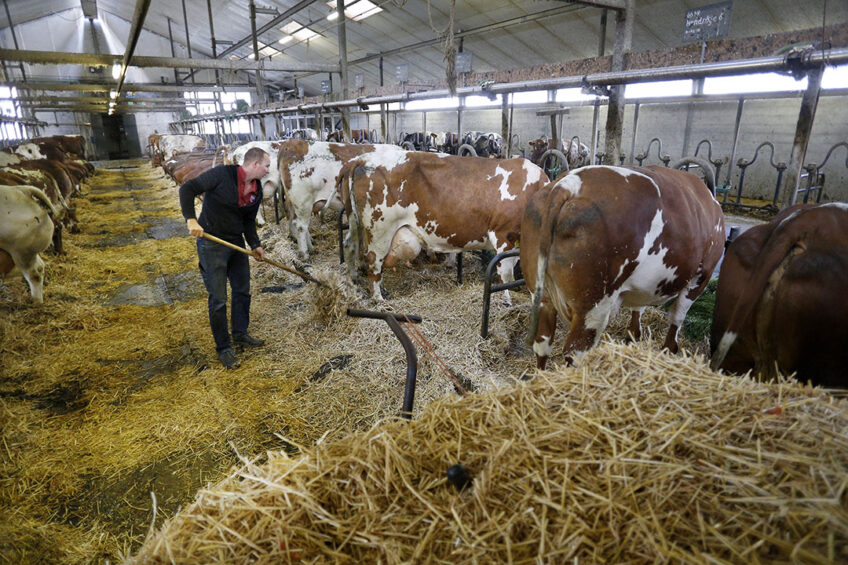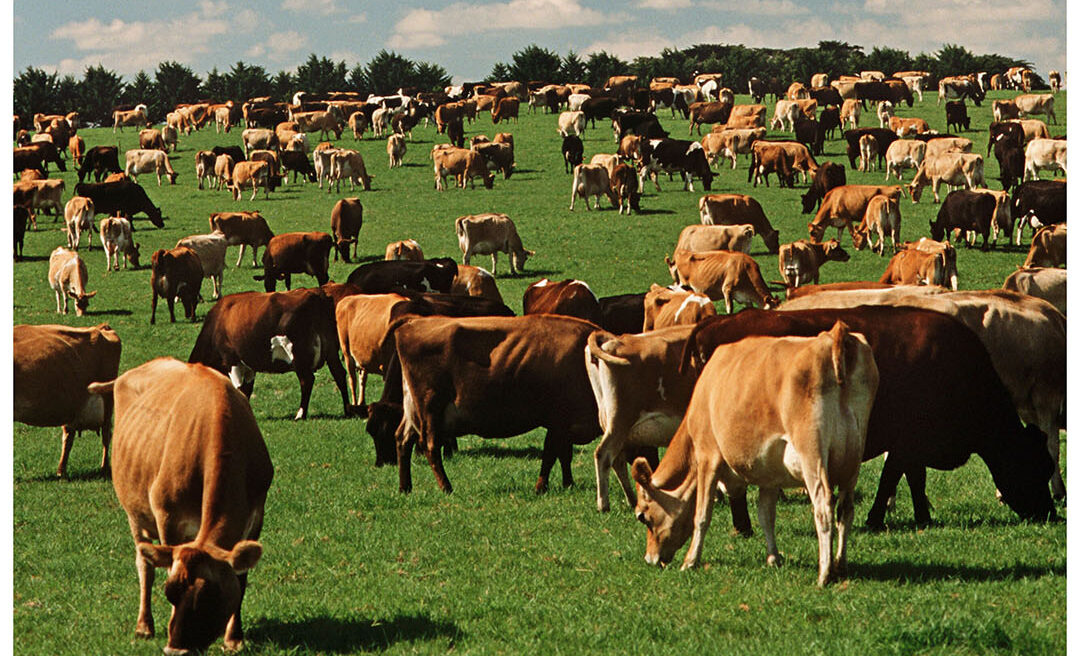Maintain cow gut health with proper feed and grazing management

Proper feeding and grazing management help maintain gastrointestinal health in ruminants and hence improves their role in utilising feed ingredients for various biological functions. What are useful strategies when attempting to achieve this target?
Colostrum feeding calves
Colostrum should be fed in adequate amounts (10% of calf body weight) within the first 24 hours after birth. After providing adequate colostrum on day 1, a second dose should be fed (especially useful in stressed calves). The immunoglobulins in colostrum will coat the small intestine and prevent attachment and colonisation by pathogens.
Additionally, colostrum provides an excellent source of energy and contains compounds such as lactoferrin which decreases gut permeability and promotes its maturation, and also prevents the inflammatory changes resulting from the free radicals that cause oxidative damage to the gut cells.
Grain feeding
High-grain diets can promote an overgrowth of Clostridium perfringens – bacteria associated with the sudden death syndrome in cattle. These diets may further promote E-coli within the digestive tract of cattle and hence cause harm to the animal.
With high-grain diets, saliva production is reduced, and the rumen pH may drop to a level that is associated with the occurrence of acidosis. In this latter case, it is recommended to increase the proportion of the forage fed during particularly cold weather, as the effects of acidosis are worsened if the animal also suffers from cold stress.
Dairy cow feeding frequency
There has been some concern that feeding 1x may result in slug feeding, which could predispose a cow to sub-acute rumen acidosis. Alternatively, more frequent offerings of feed will entail an increase in total rumination time and hence increases the amount of saliva produced. The buffers contained in saliva (bicarbonate and hydrogen phosphate) can remove around 37% of total hydrogen from the rumen to maintain physiological pH values ≥ 6.5 across time, thereby reducing the risk of rumen acidosis.
Feeding frequency also encourages the pathways of protein and lipid metabolism and the biosynthesis of vitamins in the lower gut, thereby improving the utilisation of these nutrients for productive purposes.
Dietary fat
Adding moderate amounts of fat to ruminant diets is an efficient way to reduce methane production and hence improve rumen health, energy utilisation, and animal performance. A 20% reduction in methane emission could allow growing cattle to gain an additional 75 g/d of weight. In lactating cows, a 20% reduction in methane emissions represents the same amount of energy needed to synthesise 0.6 kg/d of milk.
At a higher rate of fat inclusion in the diet, however, rumen fermentation may be adversely affected either through the coating of feed particles or through a direct toxic effect on rumen microorganisms. Fibre digestibility may be affected in this case, which ultimately results in reducing feed intake and lowering animal production. With high-fat diets, animals may also suffer from atherosclerotic lesions in the abdominal aortas along with cardiac diseases involving myocardium, pericardium, and/or blood vessels.

Use of buffers
The emphasis on increased production and efficiency in dairy cows has led to the increased use of high concentrates or, in nutritional terms, high-energy diets than roughage-based diets. These diets contain more readily fermentable starch that results in increased acid production in the rumen. As these diets are low in fibre content resulting in less chewing time and reduced production of saliva and subsequently leading to acidosis, which may also precipitate the incidence of the displaced abomasum.
In early lactation or high-producing cattle, the rumen buffers will help make the transition from high roughage during the dry period to high-concentrate diets after calving since the risk of acidosis and displaced abomasum is greatest at this time.
Pasturing and control of bloat
The incidence of bloat can be reduced by adopting the following grazing strategies:
- Animals should be turned to legume pastures after a frost. Frost on legume pastures tends to break down plant cells in those plants, increasing the risk of frothy bloat.
- If high-risk pastures are to be grazed, cattle should be fed high-fibre forages, such as hay, before turnout. Feeding hay stimulates saliva production, which reduces the risk of bloat occurring.
- Strip grazing limits the amount of high-risk grazing and ensures that a greater proportion of the entire plant is consumed, ‘diluting’ the intake of soluble proteins found in plant leaves.
- It is beneficial to add other legumes with low bloat potential (owing to their high tannin levels, which bind soluble proteins) into the pasture seed mix, for example, 10% bird foot trefoil.
- Using ionophores helps reduce the bloat potential by up to 70%. This is due to its effect on protozoa which engulf lipids and prevent their role in breaking down the froth and releasing free gases.
Internal parasites
One option to prevent parasite infections is to adopt rotational grazing, which reduces livestock losses caused by high worm loads in cattle, especially in the hot wet season. By dividing the pasture into subplots of land, animals can graze after most of the infective larvae have died off with minimum effects on gastrointestinal health and animal performance.
Mixed grazing is another option for controlling internal parasites through cross-immunity. The intake by sheep of larvae from bovine origin is not only ineffective in sheep because of the host specificity but also stimulates immunity in sheep to challenge their parasite species. Such resistance was also found in cattle, but to a less extent, as a result of the intake of larvae from the ovine origin.
Drinking water
Water salinity affects the digestive process in ruminants by decreasing the number of protozoa to only 20% of their normal population, thereby affecting the production of VFA and reducing the utilisation of lipids in the rumen, as indicated above. Saline water also stimulates cerebrospinal fluid in the brain to inhibit parotid salivary flow production, negatively affecting the rumen micro-flora and reducing digestion.
Furthermore, there is a relationship between water salinity and absorption of the digestion end-products due to the change of the rumen osmotic pressure, which affects the utilisation of energy and other dietary nutrients for productive purposes.
References are available from the author upon request.






